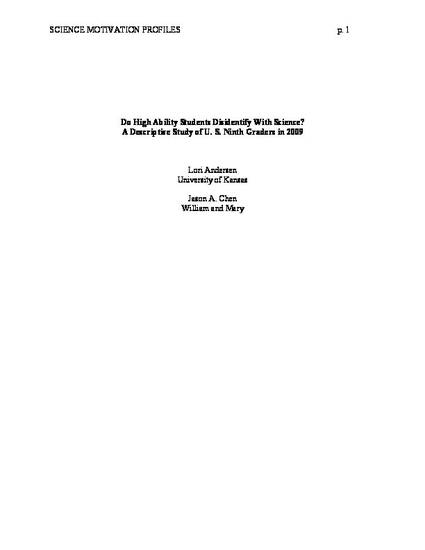
The present study describes science expectancy-value motivation classes within a nationally representative sample of students who were U.S. ninth graders in 2009. An expectancy-value model was the basis for science-specific profile indicators (self-efficacy, attainment value, utility value, interest-enjoyment value). Using exploratory latent class analysis, a four-class model was identified as the best model, based on model fit and interpretability. Although the low and typical profiles had uniform levels of indicators, the two high motivation profiles (high self-efficacy and high utility value) had mixed levels. The profile characterized by very high self-efficacy had lower values, while the profile characterized by high utility value had lower self-efficacy. The differences in math achievement between profiles were small. High-ability students disidentified with science; only 29% of high-ability students had high science expectancy-value profiles. The implications for science talent development are discussed.
